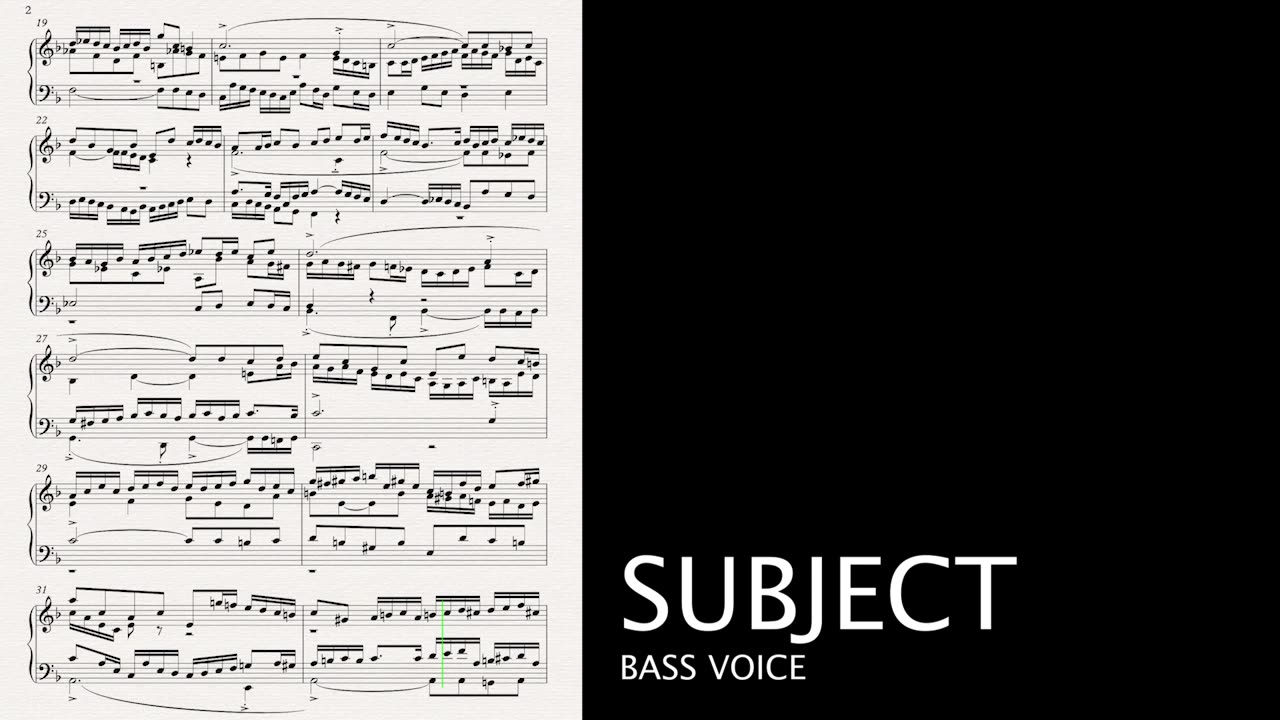Premium Only Content

Fugue, D-minor
This one took maybe 8 months since the first humming and sketching down of the subject, and presented a number of challenges from which I learned quite a bit. The subject has a pretty distinct head/tail form, initiating ON the dominant V, unfolding to the leading tone and resolving into the tonic i. It proved a fairly tricky shape for me to handle in both technical and musical ways, and several compromises between strict counterpoint and musicality had to be made. More than with any other recent composition, parallel and direct 8ves and 5ths kept creeping in. I think I zapped them all, and while I believe I settled with the most tasteful of propositions available in each case, there may still be some hidden 5ths and 8ves lurking.
To wit, mm27 originally led to mm31 but I just couldn't stand the root-position chord succession between G and A... so I added the G-C leap in the bass and inserted another subject entry in the soprano supported by a-minor harmony. This seems to work for solving the poor middleground harmony; however it caused another issue of which I'll stay mindful and revise in a few months after setting it aside. (I'm sick of working on it at this point.)
The subject's shape did not lend itself to any obvious, stunning stretto solution; though, I did find something serviceable by resorting to the inversion. That formula causes 3 parallel 4ths, thereby necessitating the enterprise to be treated between upper voices in order to abide by a bedrock rule of counterpoint above the bass, and the lower of the two participating voices has to carry the inversion to avoid parallel 5ths...
In any case, these kinds of stretto and inversion fun and games were not my goal with this fugue; instead, I wanted to experiment with a syncopation of the subject which I've never done. That feature I deployed IN []V at the onset of the climax, heralding in a nice chromatic incline in the bass, culminating with a diminished chord (locrian) entry of the subject which evolves into a [vii°]V. From there we go to a deceptive resolution to VI and then back to i with the corresponding melodic progression down to scale-degree 1... and I just couldn't resist the nice, long, feminine cadence.
Lastly, I also tried to keep the subject omnipresent: there are only a few beats here and there (the final cadence withstanding) where it is not sounding.
No ai was used. FUCK ai, and FUCK anyone who uses it.
-
 DVR
DVR
Stephan Livera
2 days agoStephan Livera hosts Plan B Podcast in Lugano
51 -
 1:08:45
1:08:45
DeVory Darkins
21 hours agoLetitia James drops frantic speech after pleading not guilty as Canada gets NIGHTMARE NEWS
96.7K46 -
 1:25:16
1:25:16
efenigson
2 days agoDigital Money or Digital Prison? - Nick Anthony | You're The Voice - LIVE from Lugano PlanB Forum!
19.8K3 -
 13:26
13:26
Cash Jordan
17 hours ago“PORTLAND MOB” Storms ICE HQ… ‘COMBAT’ Troops Respond With EXTREME FORCE
20.2K49 -
 16:00
16:00
Demons Row
14 hours ago $6.57 earnedBIKERS OF FLORIDA 💀🏍️ Outlaws, Warlocks, Mongols & the Wild South
19.8K10 -
 22:01
22:01
Jasmin Laine
17 hours agoTrump’s BRUTAL WARNING Leaves Canada Speechless—America STUNNED
18.6K56 -
 11:42
11:42
China Uncensored
18 hours agoThe Chinese Military Turns Its Gun on Xi Jinping
13.4K28 -
 2:36
2:36
The Official Steve Harvey
18 hours ago $2.60 earnedThis Is Bigger Than Comedy — It’s About Saving Young Men
16.1K3 -
 8:09
8:09
Hollywood Exposed
20 hours agoMatthew McConaughey EXPOSES The Real Reason He Left Hollywood
19.5K13 -
 29:38
29:38
Stephan Livera
2 days ago $6.59 earnedDay 2 - Stephan Livera hosts Plan B Podcast in Lugano
19.7K2